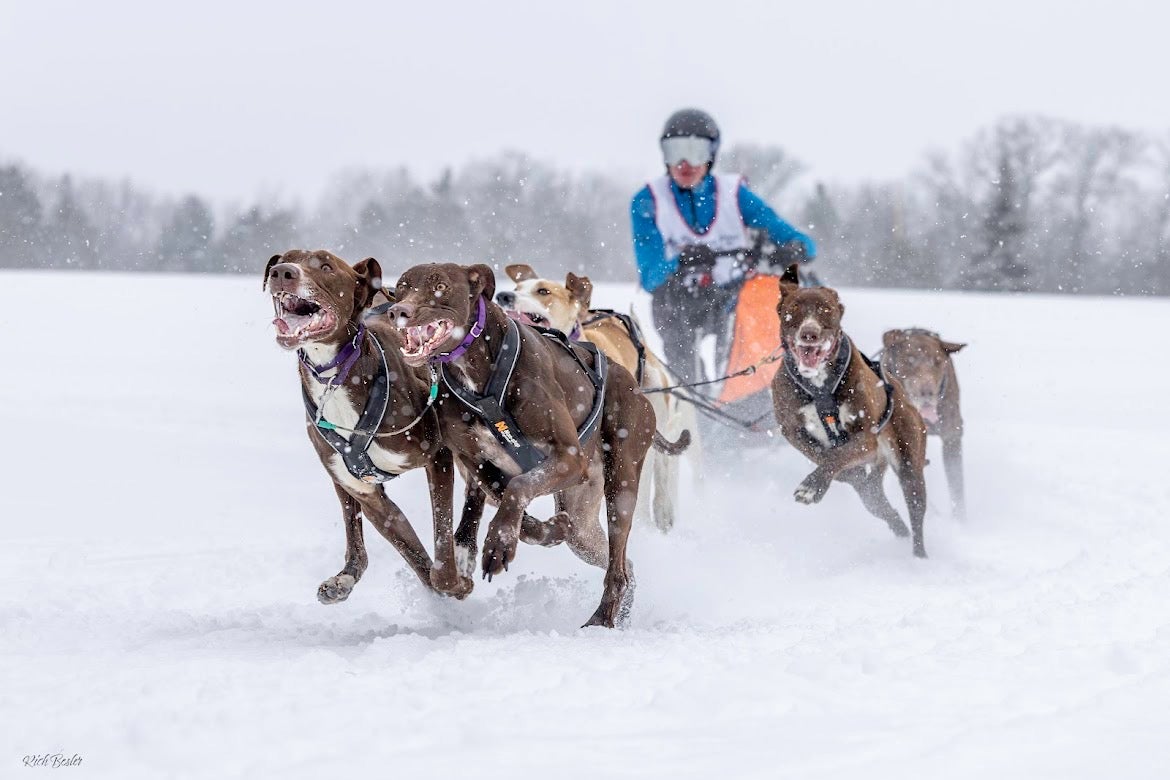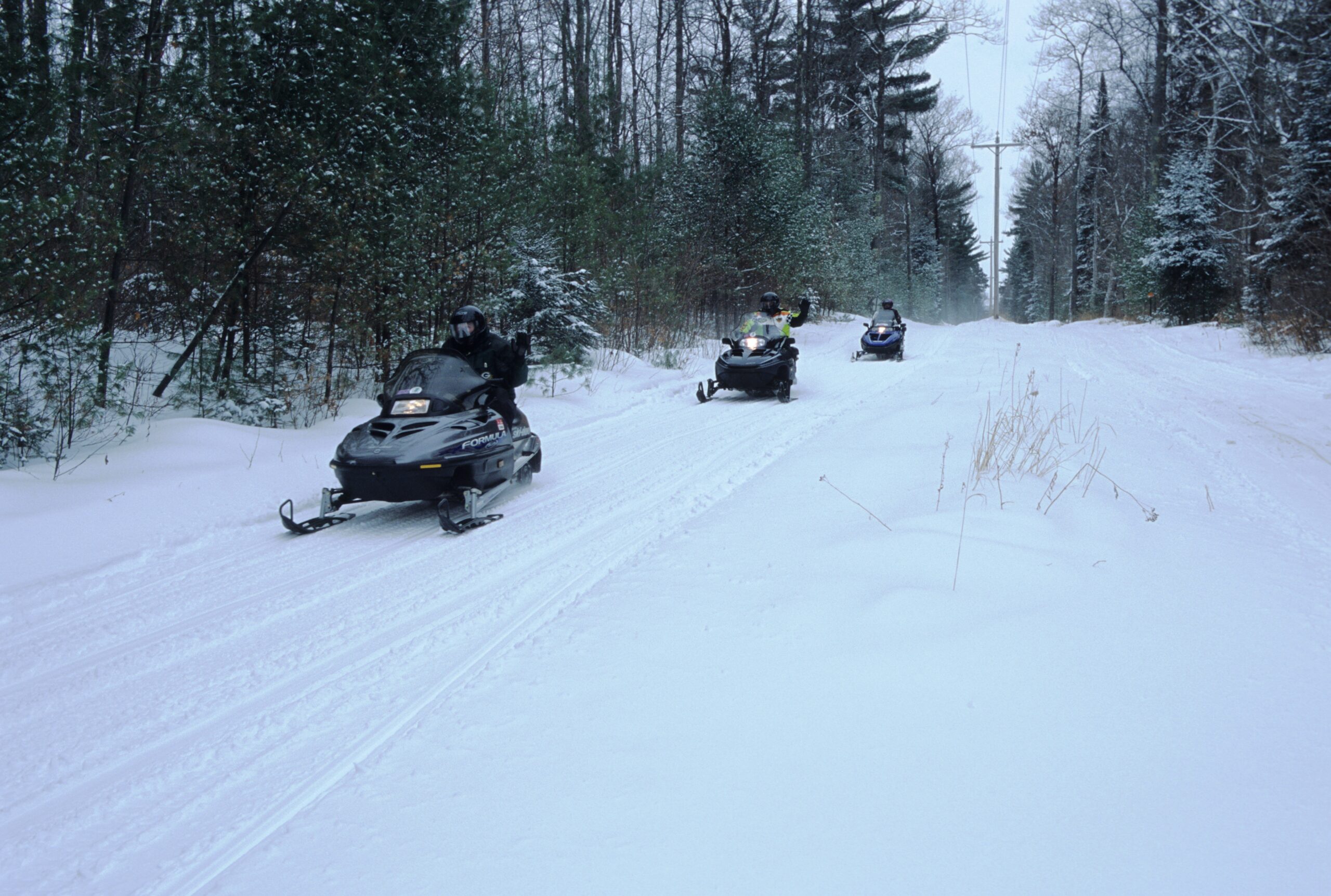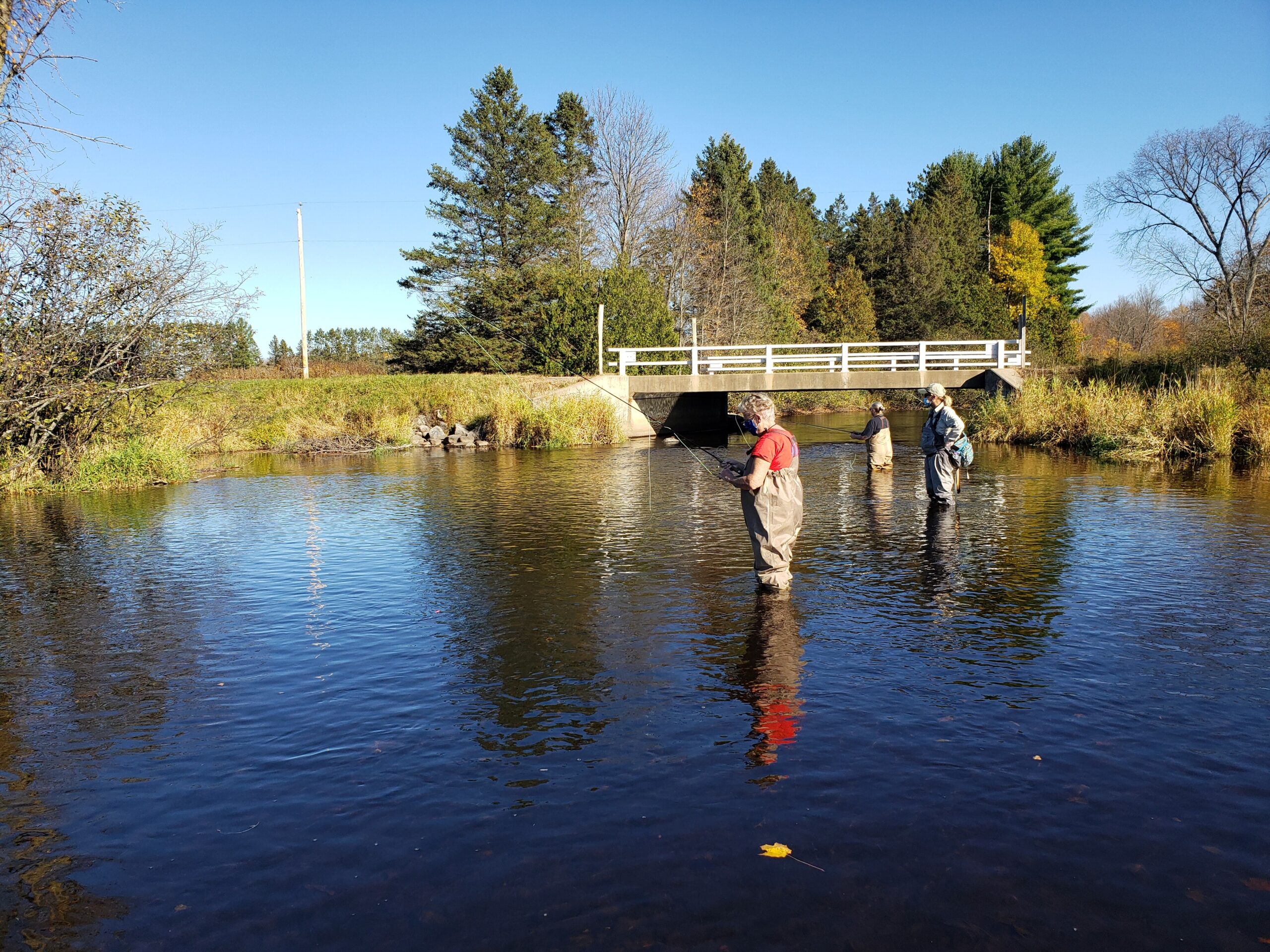Sled dog racing is a time-honored winter tradition, where mushers and their canine athletes take to the snowy trails in a test of endurance, skill, and teamwork.
While the sport is often associated with the far north, a dedicated community of racers has kept the experience alive in local communities throughout north central Wisconsin.
From small, family-friendly races to elite competitions, the sport brings together enthusiasts from all walks of life — united by a passion for the bond between musher and dog. The Wisconsin Trailblazers Snowmobile Club has played a pivotal role in fostering the sled dog racing scene for nearly five decades.
Stay informed on the latest news
Sign up for WPR’s email newsletter.
The organization’s president, Dan Bocock, spoke with WPR’s Shereen Siewert about the thrill of racing and the challenges involved. For Bocock, who lives in the Burlington area, sled dog racing is much more than just a winter pastime — it’s a year-round commitment that requires extensive training, conditioning and an unbreakable bond he shares with his 12 dogs.
“I truly love the competitiveness, but even more than that I love to see the excitement in the dog,” Bocock told Siewert, on “Morning Edition.” “Seeing how excited they are to get out and run, to be out on the trail and seeing what you and your companion have worked so hard to achieve, that’s what I love when I’m running these events.”
The Wisconsin Trailblazers Snowmobile Club has played a pivotal role in fostering the sled dog racing scene for nearly five decades. Through a circuit of well-organized events, the club provides a platform for both seasoned competitors and newcomers to experience the exhilaration of the sport. With upcoming races planned in Rhinelander and at Willow Springs Round Barn near Wausau, the excitement continues to build.
The following interview was edited for brevity and clarity.
Shereen Siewert: Can you tell us a little bit about the organization’s history?
Dan Bocock: The organization has been around for almost 50 years. It was organized to basically create a circle of racing events that were family friendly, plus events for elite mushers.
SS: Tell me about the first time you experienced a sled dog race. What did it feel like?
DB: Exhilarating. The first time for me was in what we call dryland racing, which isn’t on snow. That’s where you can run behind the dog, which is called canicross. You can ride a bike or a scooter behind the dog. It can be humbling and can also be painful, especially with canicross when the dog is pulling you with all their might and you’re trying to keep up.
SS: What qualities make a great sled dog?
DB: Sometimes stubbornness is a good quality because the dog is strong minded, and you know they’ll lead.
Body structure, composure, how their heads are shaped and how balanced they are all play a part. It takes a very smart dog to be able to learn the commands and be focused enough to pass other animals and not react or run off the path if there’s a bird or a squirrel. These dogs start training when they’re puppies and you can just tell, generally, at a very young age which dogs will be strong leaders or which will be better as part of the pack.
SS: Talk about the relationship between the musher and the dog. What is that like? Are they house pets?
DB: Some folks in the mushing community have strictly house pets. There are others who have a dog kennel or dog yard which can consist of an indoor-outdoor run, or outdoor houses and fenced-in areas. Mine are indoor dogs.
SS: What does a typical training regimen look like, especially when conditions aren’t always ideal for snow racing?
DB: We not only run the winter circuit but also the dryland circuit. Snow is sometimes hard to come by in the wintertime, but once conditions in the morning or afternoon get to below 50 or 55 degrees, we start training.
We look at humidity and temperature to make sure that we don’t overheat the dogs, and as soon as those desired temperatures are reached, I hit the ground running and training.
I try to do basically a four day per week training program with two days on the weekend and two during the week. You ramp up in the beginning of the season, starting with lower mileage until you get to where your race mileage would be. Then you maintain and keep growing from there.
SS: What are some of the biggest challenges that you and your teams face during race?
DB: Generally, the races that we hold are by the draw, so you end up with some teams that aren’t necessarily as fast. Then you wind up having to pass or having the chance that you’ll meet another team.
If you’ve got a six-dog team and you’re trying to pass another six-dog team out on the trail, that can be a difficult challenge.
Otherwise, it’s weather. We’ve had to cancel a lot of races either due to temperatures, monsoon-type downpours or lack of snow. It can be an extremely rewarding experience at a race to see all the work that you put into it, but it can also be deflating when you’ve worked for months to train your dogs, and the race is cancelled.
SS: Animal welfare is a big topic in competitive sports involving animals. How do you and the people in your club ensure the well-being of sled dogs both during the races and really in their everyday lives?
DB: Well, nutrition is huge. It’s also important to make sure their boxes are clean and that they have space where they can stretch out. Everyone in the mushing community is held to a high standard and we are very adamant about that.
At every race, we make sure there is a standard of care. Generally, when people come out, they see how excited the dogs are. They see how they love to run. And yes, they absolutely love going for that run.
SS: What is the experience like for spectators to come to watch the races?
DB: It’s exhilarating. When there are 500 or 600 dogs, when the first team starts to hook up and that many dogs start to bark and yell, it’s very loud. People are like, holy cow!
Some of the most popular dogs are purebreds, like the Siberians. The more traditional-looking sled dogs probably draw more people, and they are the dogs people love to see run. They love to see the excitement. And when the dogs come back, their tails are wagging, they’re getting their treats. Of course, there can be bad runs, too, but 99 percent of the time it’s still a good time, even if you’ve had a bad run.
If you have an idea about something in central Wisconsin you think we should talk about on “Morning Edition,” send it to us at central@wpr.org.





